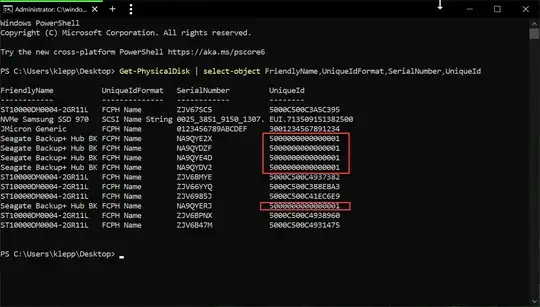I ran a game I hadn't ran in some time, and it popped up with a firewall rule request. I thought it was odd as I knew one should have already been present.
I examined the rule and the path to the exe was not correct. It should have been S:\path\to\exe and instead displayed as E:6\path\to\exe
absurd, i'd never seen anything like it so i changed it manually. Next startup, it prompted me again and recreated the rule i'd modified, wonky path n all.
So i begun digging. In event viewer was "Disk 12 has the same disk identifiers as one or more disks connected to the system. Go to Microsoft's support website (http://support.microsoft.com) and search for KB2983588 to resolve the issue."
Turns out disk 12 was the problem drive. (after more scrolling turns out it was all my external drives)
I checked all the guid's with diskpart and they were all unique. However upon running Get-PhysicalDisk | select-object FriendlyName,UniqueIdFormat,SerialNumber,UniqueId I was presented with the following.
I can only assume that those UniqueId's are the issue, and are whats effecting the path's being all weird in windows firewall.
Does a means exist to fix this? Aside from the windows firewall path's becoming undiscernable, I'm concerned about other repercussions. Elsewhere notes that this will also effect storage spaces functionality.
